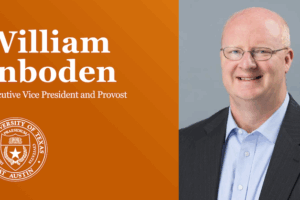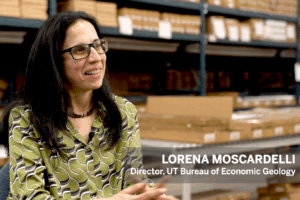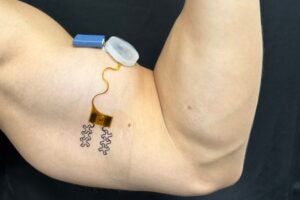Editor’s Note: Texas Exes chapters from Austin to Alaska, New Braunfels to New York and all points between gathered to celebrate Texas Independence Day on March 2. The following is an excerpt from an article about the history of the celebrations, written by Jim Nicar, the history and traditions coordinator for the Texas Exes.
For the proudest of Texans, it’s the most important day of the year. It’s a holiday no other state can claim. March 2 is Texas Independence Day, and its observance on the University of Texas at Austin campus began with a missed class, a visit to Scholz’ Beer Garden and a cannon.
In the spring of 1896, the fledgling university was confined to a 40-acre campus, with a whitewashed wooden fence around the perimeter to keep out the town cows. The university’s 482 students were divided into two departments: Academic and Law.
Law students needed only two years to complete a Bachelor of Laws and Letters. Junior Laws were first-year law students while Senior Laws were completing their final year.
On March 2, 1896 the Junior Laws were waiting for their next lecture in criminal law when one student bemoaned the fact that the day was Texas Independence Day, a legal holiday for Texans, except for university students.
The Junior Laws decided they would honor such an auspicious day by avoiding class altogether, and invited their instructor, Judge Robert Batts, to join them. Batts responded, espousing all of the dire things that might happen to those who skipped lectures. The students promptly ignored Batts’ pleas, choosing instead to spend the day at Scholz’ Beer Garden.
One year later, the now senior law class was determined to include the entire campus community in a celebration of Texas Independence and again petitioned the faculty for a holiday. But the Board of Regents had recently appointed George T. Winston as the new university president. A native of North Carolina, Winston neither understood nor shared the affinity Texans had for March 2.
Undaunted, the students pressed ahead with their plans. Four students borrowed one of the two brass cannons that stood guard in front of the State Capitol. It took most of the afternoon of March 1 to roll the cannon to the Forty Acres, where the students planned to use it for a 21-gun salute to Texas.
Just before sunrise on March 2, the students arrived for their celebration, only to find a large nail had been driven into the ignition hole of the cannon. It took some time and the employment of several pocketknives to remove the item. By then, Winston had arrived and was rather unhappily resigned to the fact that the students were going to celebrate. Hoping to minimize the damage to the class day, Winston asked the Laws to move the cannon away from the Main Building, down the hill to the university’s athletic field. Or, they could wait until after noon to have their fun. As it turned out, the students did both.
Starting at 9:30 a.m., an otherwise peaceful morning was interrupted by a series of cannon blasts. The entire Law Department attended, including Batts and Professor John Townes, and following the cannon fire, each person gave a short but sincere patriotic speech.
Meanwhile, a distracted Academic Department continued to hold classes as best as it could. The Laws, though, weren’t going to allow Texas Independence Day to pass without including the rest of the university.
At 1 p.m., the cannon was positioned in front of the Main Building, facing the Capitol. The first blast “threatened to break every window in the building.” All at once, the Academs vacated their classrooms and joined the Laws outside, and the scene of the morning was repeated, with more speeches from students and professors.
Midway through the afternoon, it was discovered that Winston had quietly made his escape home, to which a large and boisterous committee of students promptly followed. Refusing to take no for an answer, the students persuaded Winston to return to the campus and make a speech of his own. He opened with the remark: “I was born in the land of liberty, rocked in the cradle of liberty, nursed on the bottle of liberty, and I’ve had liberty preached to me all my life. But Texas university students take more liberty than anyone I’ve ever come in contact with.”
Since then, students and Texas Exes have recognized March 2 as a time to celebrate both the Lone Star State and the university. In 1900, the Ex-Students Association adopted a resolution which states: “Whenever two Texas Exes shall meet on March 2, they all shall sit and break bread and pay tribute to the institution that made their education possible.”



